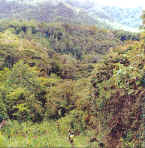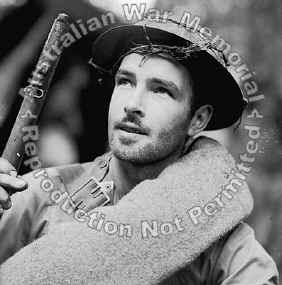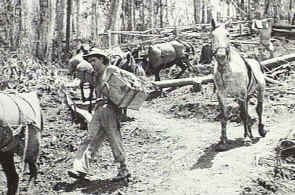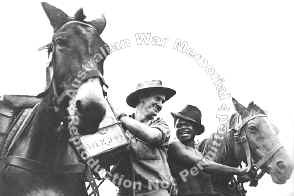 |
|
|||
|
|
||||
The Japanese were from Major-General Tomitaro Horii's Nankai Shitai (South Seas Detachment), veterans of China, Guam and Rabaul. The stand at Awaia, north-east of Kokoda, was short. The Australians and Papuans, outnumbered and outgunned, fell back to Gorari, leaving a section (about nine men) as forward patrol at Wairopi. Two days earlier about 7000 Japanese, including 2700 combat troops, had landed at Basabua, about one kilometre east of Gona Mission, on the north coast of New Guinea. |
|
Kokoda Trail by George, who was there Early in September the heavily outnumbered Brigade withdrew, but was never defeated, fighting day and night, denying every mile until almost surrounded, inflicting many times its own casualties. This most difficult of military operations in mountainous country continued for nearly four weeks until the Japanese advance was finally halted and turned back at Ioribaiwa. There was but one axis of withdrawal - a mountain track that defies adequate description. Before the campaign, this route had been considered passable only to natives or trained district officers. Imagine an area of approximately 100 miles long, crumple and fold this into a series of ridges, each rising higher and higher until 7,000 feet is reached, then declining again to 3,000 feet. Cover this thickly with jungle, short trees and tall trees tangled with great entwining savage vines; then through the oppression of this density cut a little native track two to three feet wide, up the ridges, over the spurs, around gorges and down across swiftly flowing happy mountain streams. Where the track clambers up the mountainsides, cut steps – big steps, little steps, steep steps or clear the soil from the tree roots. Every few miles bring the track through a small patch of sunlit kunai grass, or an old deserted native garden, and every seven or ten miles build a group of dilapidated grass huts as staging shelters, generally set in a foul offensive clearing. Every now and then leave beside the track dumps of discarded putrefying food, and occasional dead bodies. In the morning flicker the sunlight through the tall trees, flutter green and blue and purple and white butterflies lazily through the air, and hide birds of deep-throated song or harsh cockatoos in the foliage. About midday and through the night, pour water over the forest, so that the steps become broken and a continual yellow stream flows downwards, and the few level areas become pools and puddles of putrid mud. In the high ridges about Myola, drip this water day and night softly over the track through a fetid forest grotesque with moss and growing phosphorescent fungi. Such is the track which was once described as "being almost impassable for motor vehicles", and such was the route to be covered from Deniki to Ilolo. Along this track, day after day, the walking sick and wounded passed and plodded, those too desperate to stand being carried by native carriers. Carrying improvised stretchers, one or two blankets lashed with native string or vine to two long poles spread by stout traverse bars, as many as eight or ten native bearers would traverse the track day after day. To watch them descend steep spurs into a mountain stream, along the bed and up the steep ascent, was an object lesson in stretcher bearing. They carried stretchers over seemingly impassable barriers, with the patient reasonably comfortable. The care they give to the patient is magnificent. If night finds the stretcher still on the track, they will find a level spot and build a shelter over the patient. They will make him as comfortable as possible fetch him water and feed him if food is available, regardless of their own needs. They sleep four each side of the stretcher and if the patient moves or requires any attention during the night, this is given instantly. These were the deeds of the "Fuzzy Wuzzy Angels"-for us! What can we do for them? As to the walking sick and wounded absolute ruthlessness was essential. Those alone that were quite unable to stagger or struggle along were carried, but frequently men against their will had to be ordered on to stretchers. There was practically never a complaint nor any resentment. From each staging post at dawn, the walkers, the lame and the halt were set upon their way, while the native bearers were assembled for their tasks. Late each afternoon, and far into the night, each staging post would receive its casualties. These would be fed, sheltered and tended until dawn, then on again. The courage and cheerfulness of these casualties was wonderful, beyond praise-some-times almost incredible. One soldier with a two-inch gap in a fractured patella, splinted by a banana leaf, walked for six days and arrived at hospital in good condition. That no known live casualty was abandoned, that of the many hundreds brought out during these weeks only four died subsequently in hospital, is a magnificent tribute to the fitness and the fortitude of these men. Time and rain and the jungle will obliterate this little native pad, but for ever more will live the memory of weary men who have passed this way, ghosts of glorious men that have gone. Gone far beyond the Kokoda Trail.. from "AS YOU WERE!" 1946 by the AWM |




